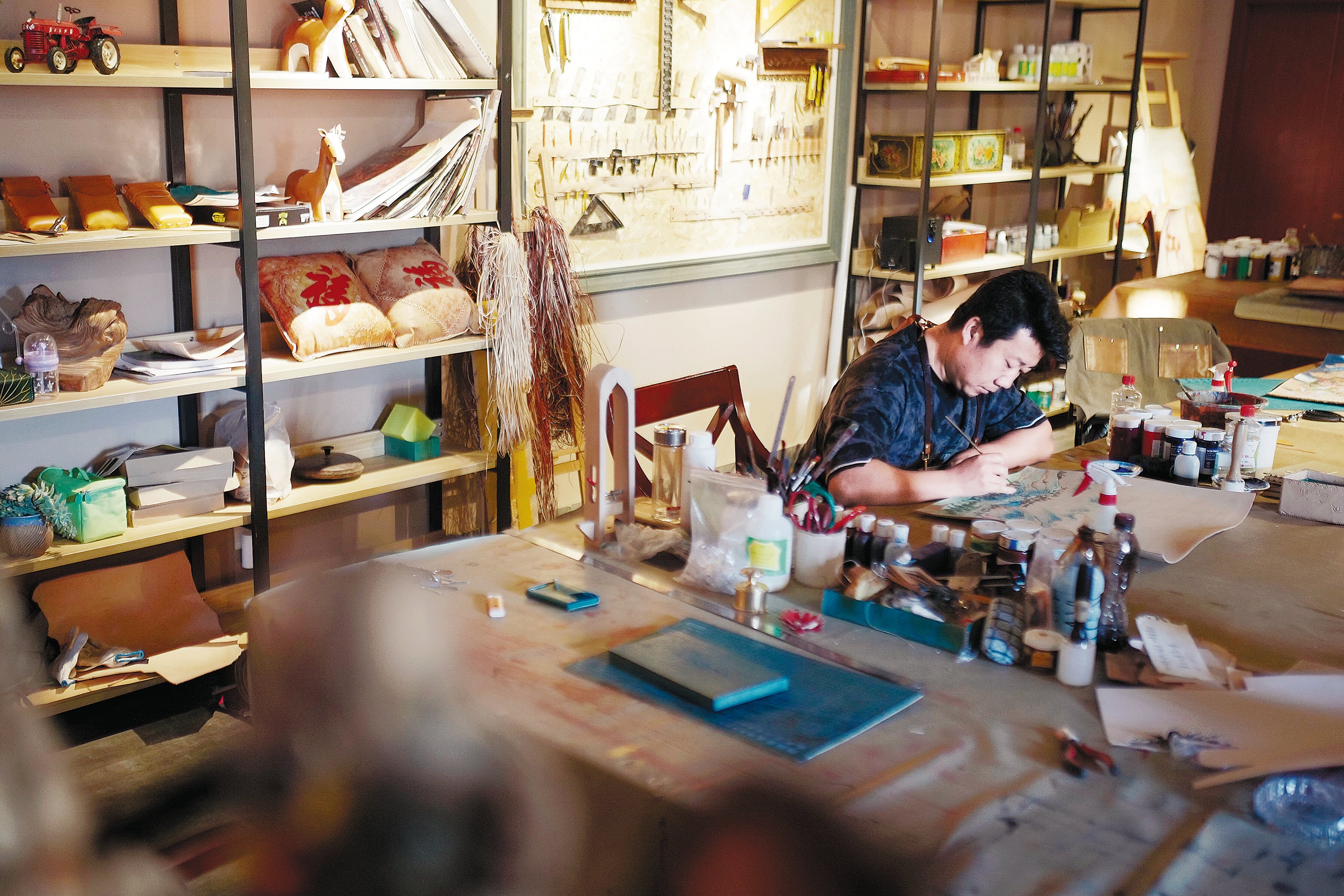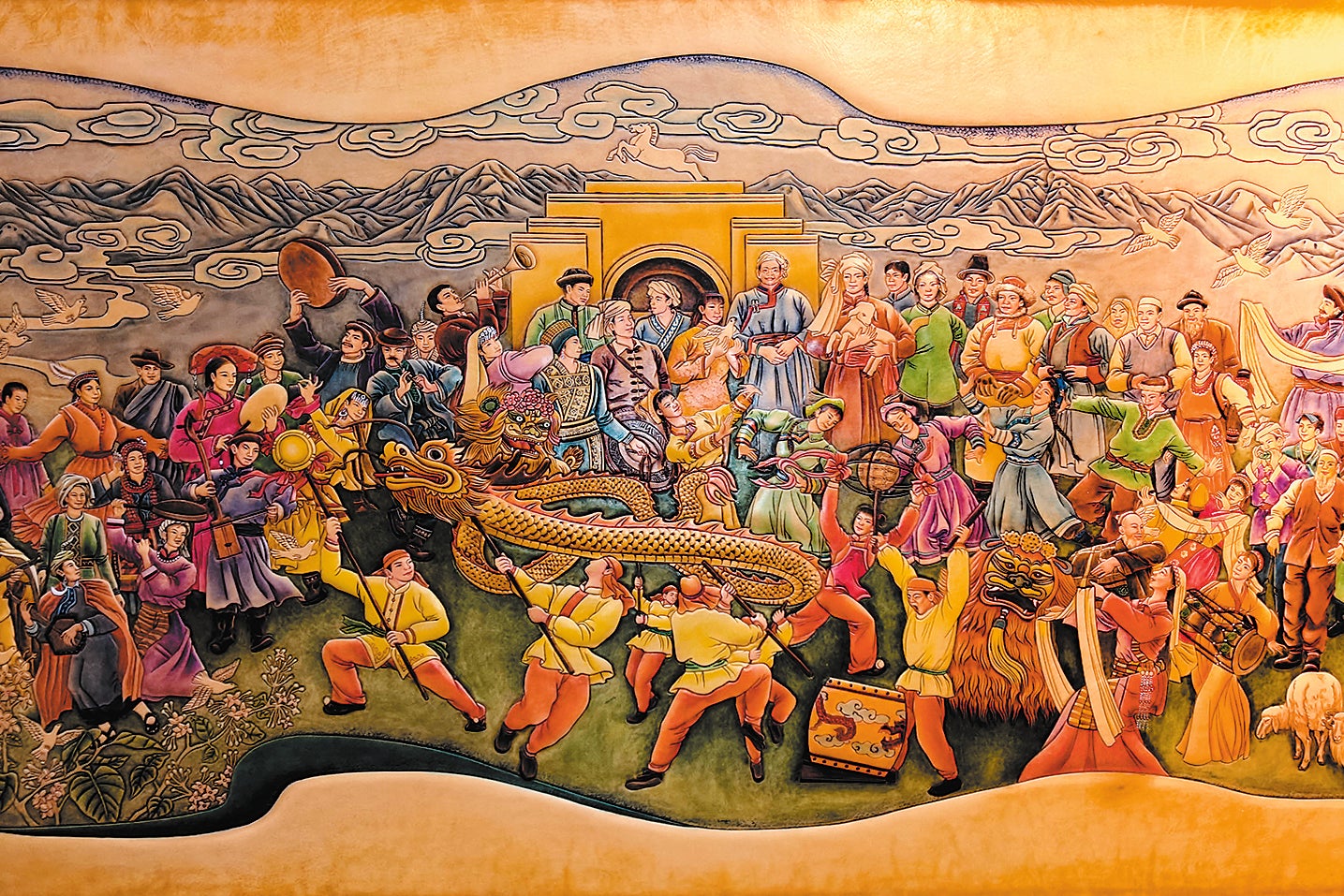Leather art connects past and present
THE ARTICLES ON THESE PAGES ARE PRODUCED BY CHINA DAILY, WHICH TAKES SOLE RESPONSIBILITY FOR THE CONTENTS

Blooming flowers, galloping horses and spectacular mountainous landscapes seem to spike your senses when walking into Jia Hongwei’s leather painting facility in Hohhot, North China’s Inner Mongolia autonomous region.
Those vivid images give off a leathery sheen under the light. Observed at close quarters, they are all delicately sculpted out of a single cowhide.
“Leather carving artworks feature a rich variety of subjects, including life scenes of various ethnic groups along the Yellow River, vibrant and beautiful peony flowers, majestic eagles spreading their wings in flight, and proud, elegant peacocks,” says Jia who was born and raised in the region.
“Anything that can be painted on paper can also be depicted on leather,” he says.
Widely considered a microcosm of herdsman culture, leather painting from the autonomous region was named a national intangible cultural heritage in 2021.
The art form evolved from the Mongolian people’s long-term use of leather and has a rich history and culture.
During the Song (960-1279) and Liao (916-1125) dynasties, the Mongolian people not only made leather clothing, boots and bags but also engraved texts and recorded events on the material.
This marked the emergence of the earliest leather carving work, according to Yan Lirong, a scholar from the School of Art and Design, Inner Mongolia University of Science and Technology based in the region’s Baotou city.
In the Yuan Dynasty (1271-1368), the variety of leather materials used in Mongolian carving expanded to include sheepskin, bearskin and cowhide.
The leather was also made into protective clothing for the army and boots for civilians.
By the Qing Dynasty (1644-1911), Mongolian leather products incorporated more decorative elements, with techniques, such as embroidery, applique, and inlay used to adorn leather items with coral and silver ornaments.

However, after the Qing Dynasty, Mongolian leather carving began to decline.
Part of the reason, according to Jia’s observation, was modern lifestyles leading to less demand for leather products and mass-produced industrial items elbowing out manual products.
However, his fate was sealed when he witnessed, as a young child, his father, also a herdsman, making clothes and other items from leather.
He still remembers his grandfather producing leather paintings. After finishing his studies at a local art school in the early 2000s, Jia decided to carry forward the art.
He has long noticed many daily items on the grasslands bearing leather painting elements, such as saddles and boots.
“They were both beautiful and practical. However, they were not particular about material selection, the workmanship was rough, and they had an unpleasant smell, leading to a decline in their popularity,” he says.
Having an art background, Jia started to restore and optimise the traditional craft and explore ways of integrating it with other forms of intangible cultural heritage.
“Leather painting primarily involves carving and inlay on hand-tanned leather, making it a challenging craft,” Jia explains.
Its forms include relief and openwork, the latter featuring patterns or designs being created by cutting, piercing or carving away parts of the material to create intricate, lacelike effects that allow light to pass through.
The cowhide will first be moistened to make it softer and more flexible.
The process then begins with drawing the design on paper, which is then applied to the hide for further processing.
Skillful carving will ensue, giving rise to vivid shapes coming out of the hide.
After the carving is complete, the leather is dyed meticulously before other operations are added, such as assembling accessories and inlaying gemstones and mounting, transforming it all into a complete work of art.
“The crafting process is at the core of leather painting and a major test of an artisan’s skill,” Jia says.
At the end of the day, good leather artwork should be visually dynamic, with clear layers and contrasts, smooth lines and rich colours, while the inlaying and stitching techniques should enhance the integration of colour and relief, he adds.
Yuan Hui contributed to this story.
